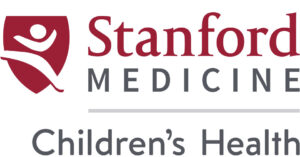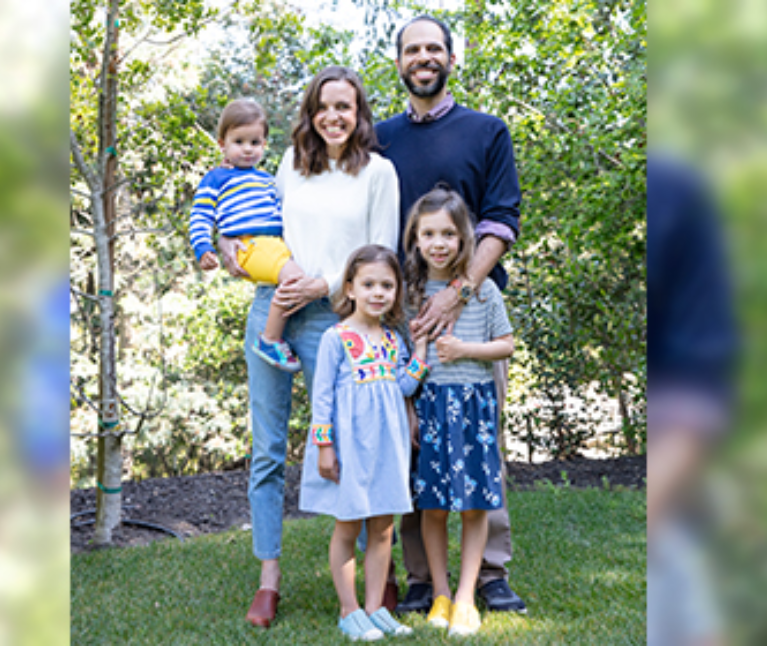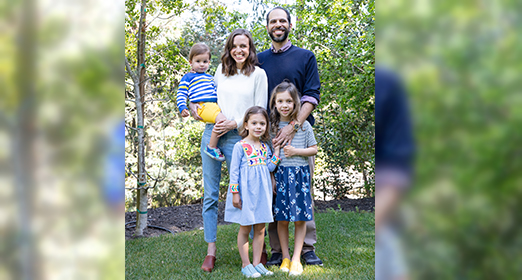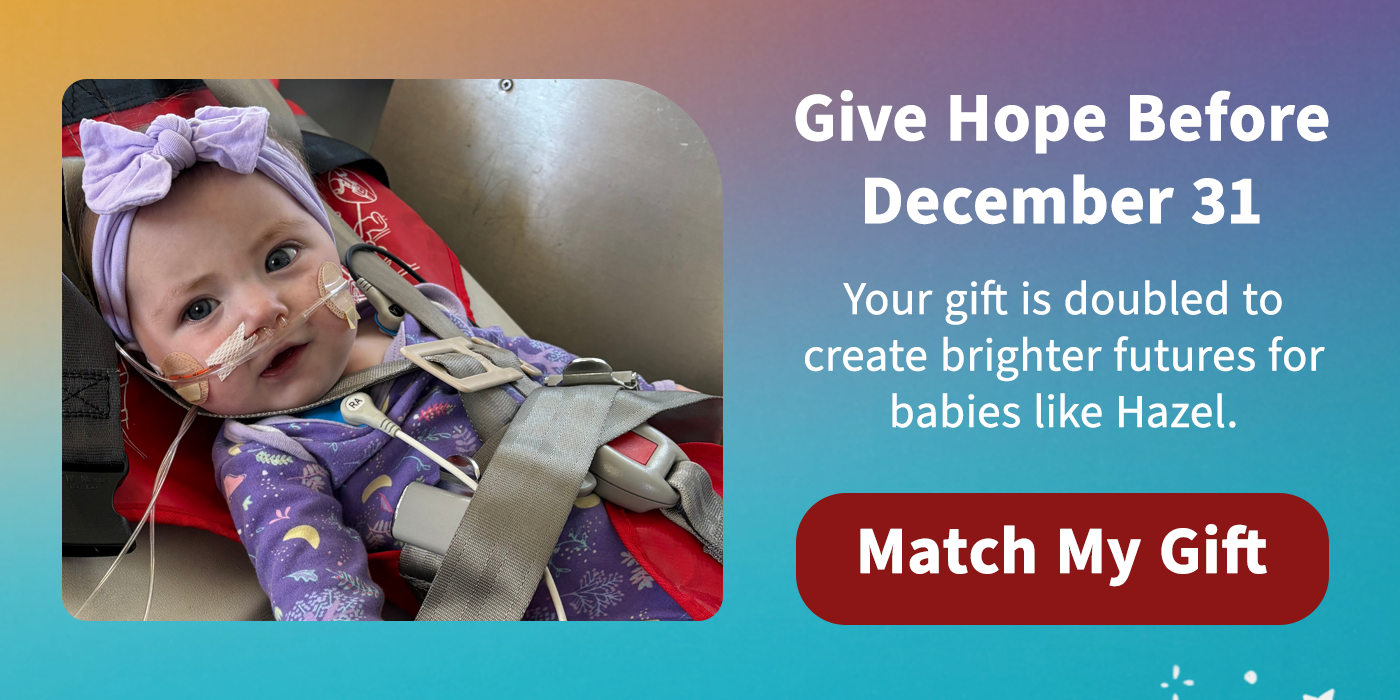The Makhzoumi family chose Packard Children’s for their son’s care and their philanthropic support.
Kate and Mohamad Makhzoumi say they felt a mixture of “shock and awe” when their son, Hassan, was born with a heart condition called aortic stenosis. It wasn’t the typical newborn experience they had expected, and they were suddenly thrust into discussing complicated surgeries with doctors at some of the country’s top hospitals. Doctors reassured them that their son’s prognosis looked good as long as he had some sort of cardiac intervention quickly. However, after that first step, he would need more procedures throughout his childhood.
Their search ended when they sat down with Frank Hanley, MD, chief of Pediatric Cardiac Surgery at the Betty Irene Moore Children’s Heart Center at Packard Children’s Hospital. The Makhzoumis knew they’d found the place they wanted 7-pound Hassan to be.
“We felt like we were picking a care team that would be with our son for the rest of his life, or at least the rest of his pediatric life,” Mohamad says. “Seeing the thought, the caring, and the time that was invested by Dr. Hanley during that first conversation was indicative of the care philosophy that the entire team embodies.”
Hanley introduced the couple to Stanton Perry, MD, and Lynn Peng, MD, who leads the interventional catheterization program. The doctors recommended that Hassan receive a balloon valvuloplasty, which involves inserting a small catheter holding an expandable balloon into the heart and inside the narrow valve. The balloon is expanded to dilate the valve.
The procedure worked! Today Kate describes Hassan as an active 2-year-old who enjoys building “elaborate” houses for his cars and digger trucks with Magna-Tiles and making waffles on the weekends with his sisters, Samira, 4, and Ameena, 5, at their Bay Area home.
Because his condition put him at risk for developmental delays, Hassan was recommended for and enrolled in Packard Children’s Developmental and Behavioral Pediatrics Clinic. He graduated from the program in March after meeting all his benchmarks.
Another operation, but when?
Hassan continues to visit our hospital every eight weeks for an echocardiogram with Michelle Kaplinski, MD. Mohamad jokes that Kaplinski is the only person outside their household that Hassan has seen since the start of the pandemic.
“We are constantly monitoring. We thought one year without another procedure would be a huge success. It has now been two,” says Kate. “That first procedure went so well.”
And that’s buying Hassan more time before he needs a full heart valve replacement. “I remember that Dr. Hanley said if we were to replace the valve now, it will be a pig valve. By the time Hassan is fully grown and we replace it for the last time, it will be 3D printed,” Kate says. “It dawned on me that so much is going to change between now and when Hassan is 18 years old. That made me feel comforted and hopeful—like this is a problem that can be solved.”
Helping kids like Hassan
3D printing of organ tissues and other cutting-edge science is already happening at Stanford as part of the new Basic Science and Engineering (BASE) initiative. Researchers in BASE are working to find cures for life-threatening congenital heart defects like Hassan’s, which led the Makhzoumis to make a donation to advance this promising work.
The Makhzoumi Fund for BASE Innovation will support a cross-disciplinary team of researchers working together to determine whether a genetic mutation causes impaired heart valve function. If it does, they will then work to correct the mutation or facilitate heart valve development that’s halted by the mutation.
“We want to further the research and innovation,” says Mohamad, “and ensure that any family that is in our situation can find their way to the same kind of care we received.”
This article originally appeared in the Summer 2021 issue of Packard Children’s News.



